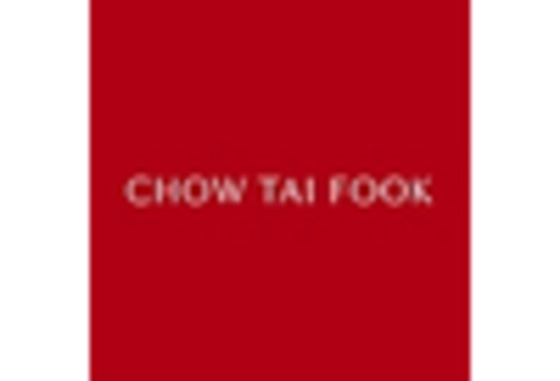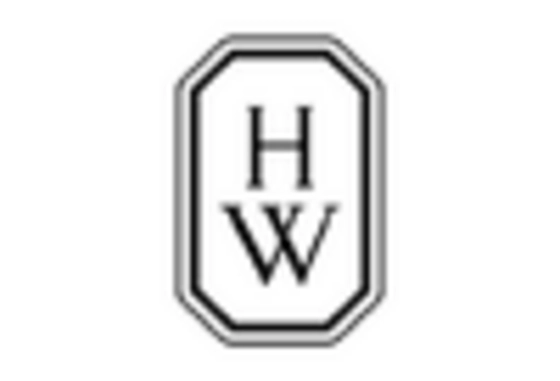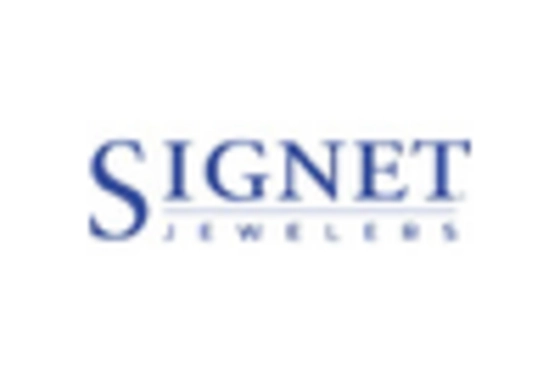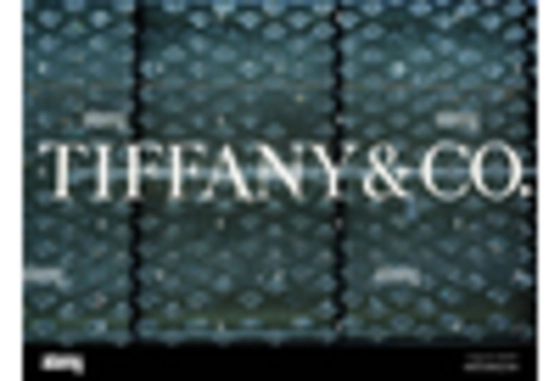Economic Factors and Consumer Spending
Economic conditions play a pivotal role in the Bridal Jewelry Market, influencing consumer spending patterns. In periods of economic growth, consumers are more likely to invest in high-quality bridal jewelry, often opting for premium materials and intricate designs. Conversely, during economic downturns, there may be a shift towards more affordable options, impacting the overall market dynamics. According to recent data, the bridal jewelry segment has shown resilience, with a projected growth rate of approximately 5% annually over the next few years. This growth indicates that despite economic fluctuations, the Bridal Jewelry Market continues to attract consumers, driven by the emotional significance of wedding jewelry.
Sustainability and Ethical Consumerism
The growing awareness of sustainability and ethical sourcing is reshaping the Bridal Jewelry Market. Consumers are increasingly seeking jewelry that aligns with their values, prompting brands to adopt more transparent practices. This shift is evident in the rising demand for conflict-free diamonds and recycled materials, as couples prioritize ethical considerations in their purchasing decisions. According to recent surveys, a significant percentage of consumers express a preference for brands that demonstrate a commitment to sustainability. This trend not only influences purchasing behavior but also encourages jewelers to innovate and create eco-friendly collections. As a result, the Bridal Jewelry Market is likely to see a continued emphasis on sustainability, appealing to a conscientious consumer base.
Cultural Significance of Bridal Jewelry
The Bridal Jewelry Market is profoundly influenced by cultural traditions and customs surrounding weddings. In many societies, the exchange of jewelry symbolizes commitment and love, making it an integral part of the wedding ceremony. For instance, in regions where gold is a traditional choice, the demand for gold bridal jewelry remains robust, reflecting cultural preferences. Additionally, the rise of destination weddings has led to an increase in demand for unique and locally sourced bridal jewelry, as couples seek to incorporate regional elements into their ceremonies. This cultural significance not only drives sales but also encourages jewelers to create pieces that resonate with specific cultural narratives, thereby enhancing the overall appeal of the Bridal Jewelry Market.
Emergence of Online Retail and E-commerce
The rise of e-commerce has transformed the Bridal Jewelry Market, providing consumers with unprecedented access to a wide array of options. Online platforms enable couples to explore diverse styles and price ranges from the comfort of their homes. This shift towards digital shopping has been accelerated by advancements in technology, allowing for virtual try-ons and personalized shopping experiences. As a result, many traditional jewelers have expanded their online presence to remain competitive. The convenience of online shopping, coupled with the ability to compare prices and styles, has likely contributed to an increase in sales within the Bridal Jewelry Market. This trend suggests that the future of bridal jewelry retail may increasingly rely on digital platforms.
Influence of Social Media and Celebrity Trends
The Bridal Jewelry Market is increasingly shaped by social media platforms and celebrity endorsements. As couples turn to social media for inspiration, the visibility of bridal jewelry styles has expanded significantly. Platforms like Instagram and Pinterest serve as visual catalogs, showcasing the latest trends and designs. Moreover, celebrity weddings often set the tone for bridal jewelry preferences, with high-profile figures influencing consumer choices. For example, the popularity of certain engagement ring styles can surge following a celebrity's choice, leading to increased demand in the Bridal Jewelry Market. This trend suggests that social media not only enhances brand visibility but also plays a crucial role in shaping consumer preferences and driving sales.

















Leave a Comment